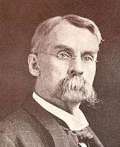All medicines operate upon the will and understanding first (sometimes extensively on both) affecting man in his ability to think or to will, and ultimately upon the tissues, the functions and sensations.In the study of Aurum we find the affections are most disturbed by that drug. Man’s highest possible love is for his life. Aurum so destroys this that he does not love his life, he will commit suicide. Argentum on the other hand so destroys man’s understanding that he is no longer rational; his memory is entirely ruined. So with every proved drug in the Materia Medica. We see them affecting first man’s mind, and proceeding from the mind to the physical economy, to the outermost, to the skin, the hair, the nails. If medicines are not thus studied you will have no knowledge of them that you can carry with you. The Materia Medica has been established upon this basis.
Sickness must therefore be examined by a thorough scrutiny of the elements that make up morbid changes that exist in the likeness of drug symptoms. To the extent that drugs in provings upon healthy men have brought out symptoms on animal ultimates must we study sickness with the hope of adjusting remedies to sickness in man under the law of similars. Ultimate symptoms, function symptoms, sensorium symptoms and mind symptoms are all useful and none should e overlooked. The idea of sickness in man must be formed from the idea of sickness perceived in our Materia Medica. As we perceive the nature of sickness in a drug image, so must we perceive the nature of the sickness in a human being to be healed.
Therefore our idea of pathology must be adjusted to such a Materia Medica as we possess, and it must be discovered where in these are similar in order to heal the sick. The totality of the symptoms written out carefully is all that we know of the internal nature of sickness. Then the proper administration of the similar remedy will constitute the art of healing.


